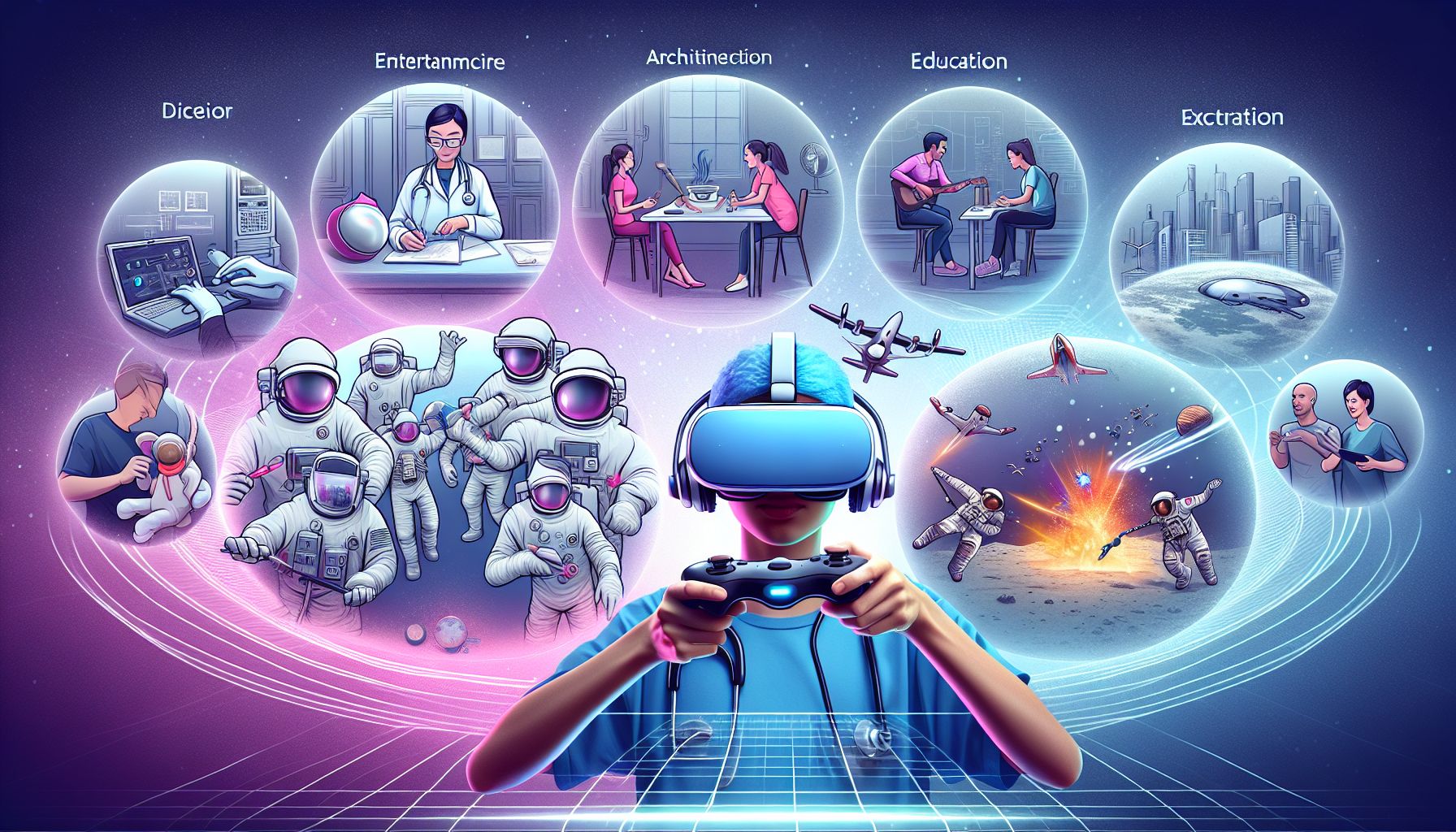⚡ “Imagine conducting a high-risk surgery, exploring the depths of the ocean, or designing your dream home, all without leaving your living room. Welcome to the world where Virtual Reality is reshaping the impossible, and making it an everyday reality.”
In an era where technology is at the forefront of almost every aspect of our lives, the line between the physical and digital world is increasingly blurring. One technology that epitomizes this fusion is Virtual Reality (VR). It’s no longer just the stuff of sci-fi or gaming nerds; it’s quickly becoming a revolutionary tool that has the potential to reshape our reality and redefine multiple industries. With its ability to create immersive, interactive 3D environments, VR offers a new and dynamic way to engage users, providing experiences that are both dramatically compelling and intensely personal. But beyond the realm of video games and entertainment, how is VR making waves in other sectors? Let’s dive into the virtual world and discover the transformative potential of VR across various industries.
🎓 Education and Training: Learning Redefined

"Virtual Reality: Igniting Transformation Across Industries"
The traditional classroom setup has long been due for an upgrade, and VR might just be the perfect catalyst. In the realm of education, VR acts as a game-changer, making learning more immersive, interactive, and enjoyable. Imagine taking a virtual field trip to the Colosseum in Rome or the Great Barrier Reef, exploring these world wonders without leaving the classroom. Or perhaps, medical students performing virtual surgeries, allowing them to practice and make mistakes without any real-world consequences. By presenting an interactive, 3D visualization of complex subjects, VR can help in better understanding and retention of information. Moreover, businesses are leveraging VR for training employees in a risk-free and cost-effective manner. Be it practicing emergency procedures, simulating customer interactions, or learning to operate heavy machinery, VR can replicate real-world scenarios for safe and effective training.
🏥 Healthcare: A New Dimension of Care
Healthcare is another industry where VR is making significant strides. From patient care to medical training, VR is revolutionizing the way health services are delivered and experienced. For patients, VR can be used as a therapeutic tool. It has shown promise in treating conditions like post-traumatic stress disorder (PTSD), anxiety, and phobias by providing controlled environments where patients can face their fears safely. It’s also used in pain management, where immersive VR experiences can distract patients undergoing painful procedures, reducing their perceived pain levels. For healthcare professionals, VR provides a new dimension to medical training. Surgeons can rehearse complicated surgeries in a virtual environment before the actual operation, reducing the risk of errors. Medical students can learn anatomy in a more interactive and engaging way, gaining a deeper understanding of the human body.
🏗️ Architecture and Real Estate: Building Virtual Worlds
Architecture and real estate are industries where visual representation is key, and that’s where VR comes in. It allows architects to create 3D models of their designs, enabling them to visualize and walk through the structure even before it’s built. This not only aids in better design understanding but also helps in identifying and rectifying potential design flaws early on. In real estate, VR can provide potential buyers or renters a virtual tour of the property, allowing them to explore every nook and cranny from the comfort of their homes. This can save both time and resources, especially for out-of-town clients or during times when physical visits are not possible, like during a pandemic.
🛍️ Retail: The Virtual Shopping Experience
Virtual reality is also reshaping the retail industry, offering customers a unique and personalized shopping experience. VR can create virtual showrooms where customers can browse and try out products virtually. For example, a customer can try on clothes or accessories in a virtual dressing room, or they can see how a piece of furniture looks in their home before making a purchase. For businesses, VR can provide valuable insights into consumer behavior. By tracking eye movement and interaction within the virtual store, businesses can gather data on what products catch the customer’s attention, how they navigate the store, and what influences their purchase decisions.
🧭 Conclusion
As we continue to explore the possibilities of Virtual Reality, it’s clear that this technology is not just about altering our perception of reality but also about enhancing our experiences within it. From providing immersive learning experiences in education to revolutionizing patient care in healthcare, from redefining design processes in architecture to transforming shopping experiences in retail, VR is reshaping reality across various industries. But as with any technology, the full potential of VR can only be realized with thoughtful implementation and ethical considerations. As we stride into a more immersive, interactive, and virtual future, it’s crucial that we navigate this digital landscape responsibly, ensuring that technology serves us and not the other way around. So, put on your VR headset and brace yourself for a virtual journey into the future. The possibilities are virtually limitless.
Curious about the future? Stick around for more! 🚀
